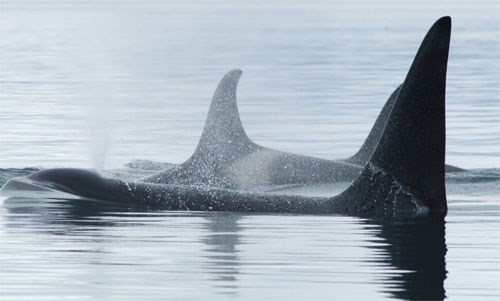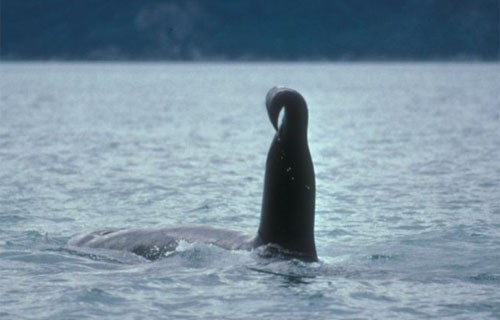Last updated: September 17, 2020
Article
Killer Whale Population Assessment
Is the killer whale population growing or declining?
How does it correlate with fluctuating populations of prey species?
How does it correlate with fluctuating populations of prey species?
Principal Researchers:
Dena Matkin, North Gulf Oceanic SocietyDates:
Yearly, May - October
NPS Photo / Chris Gabriele
Introduction
The objectives of this study are to define the population size, structure, range, feeding and social behaviors of the killer whales that inhabit Glacier Bay and contiguous waters of southeastern Alaska. Killer whale photographic, acoustic and prey data are compared with historical and concurrent marine mammal research in Glacier Bay and adjacent regions in Alaska and Canada. Long-term comparative studies further our understanding of killer whale predation patterns and trends in the dynamic interrelationships between predator, prey and climate fluctuations.

Methods
Surveys are conducted from a 20-foot vessel equipped with a 115 hp outboard engine to collect photographs of the left side of each whale’s dorsal fin and saddle patch, and calf’s eyepatch. Groups are then followed to document predation events. Prey is identified visually, photographically, and from recovery of prey fragments for genetic analysis. Acoustic recordings are obtained with a boat-based hydrophone lowered to about 50 feet with boat engine turned off.
Two ecotypes of killer whale from British Columbia, Canada and Prince William Sound, Alaska overlap in southeastern Alaska. Southern Alaska Residents eat salmon and halibut and travel in stable family groups of more than 50 individuals from north and west of Prince William Sound to southeastern Alaska. As fat-rich fish resources have become dispersed, Resident hunting groups have become smaller, consisting of 10-20 individuals from fewer matrilines.

Results
Bigg’s Transients eat marine mammals and birds and usually travel in smaller groups of less than 10 individuals: West Coast Transients range from British Columbia to southeastern Alaska, and the Gulf of Alaska Transients can be found in the North Pacific west to Hawaii. Biopsy skin samples indicate that the Southern Alaska Residents and Bigg’s Transients have not interbred for about a million years. A third ecotype is the Offshores who range throughout the North Pacific, feed on sharks and are rarely seen nearshore.
Researchers are beginning to refer to these three ecotypes as distinct “cultures” as their food habits and predation techniques are passed down from one generation to the next. The West Coast Transients are the most frequently encountered ecotype in Glacier Bay and Icy Strait. Based on predation events (n=146) observed from 1987 through 2018, West Coast Transients killed and consumed harbor porpoise (34%), harbor seal (25%), Steller sea lion (23%), seabirds (7%), northern sea otter (7%), Dall’s porpoise (3%) and minke whale (1%).
As Glacier Bay’s harbor seal population has declined, more Transient family groups have refined their coordinated hunting skills to exploit an increasing Steller sea lion population. This nutritional advantage appears to have resulted in increased reproduction and sizes of those family groups. Alaskan Transients contain the highest levels of environmental contaminants of the three ecotypes as toxins bioaccumulate at the top of the food chain. Although this can negatively affect reproduction and overall fitness, new Transient calves are photo-documented every year.

Dena Matkin photo
Contact
Killer whale sightings can be called into KWM 20 Bartlett Cove which are then immediately passed on to the researcher: time, location, number of animals and direction last seen traveling.
Learn More:
“The Mammal-Eating Killer Whales of Glacier Bay: Hunting with the Strong Silent Types” by V. Deecke et.al. Alaska Park Science vol. 5 no. 2, 2006.
“Killer Whale Feeding Ecology. . .in the Glacier Bay Region” by D. Matkin, J. Straley and C. Gabriele, in Proceedings of the Fourth Glacier Bay Science Symposium 2007;
“Killer Whale: The Top, Top Predator” Robert Pitman, ed., Whalewatcher 2011;
“Alaskan Love Stories: A Researcher’s Life” by D. Matkin, 2013.
“An Orca Story: Predation and one Killer Whale’s Family” by D. Matkin 2015
